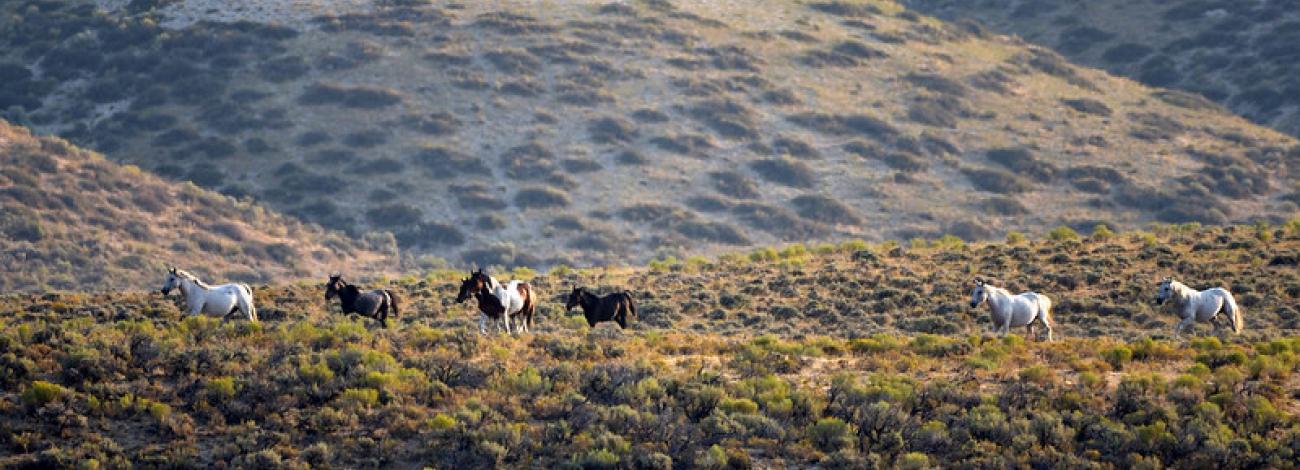BLM approves Rawlins Adobe Town wild horse gather plan
RAWLINS, Wyo. – The Bureau of Land Management has approved plans for how the agency will manage the gather and removal of wild horses from the Adobe Town Herd Management Area in south-central Wyoming.
This gather will remove approximately 1,675 excess wild horses. The area includes nearly 348,000 acres of mostly public lands managed by the BLM intermingled with some private lands. Recent infrared aerial surveys have shown wild horse populations exceed the established appropriate management level of 259 to 536 wild horses in the area.
Removal operations are planned to begin in the summer or fall of 2025. This multi-year gather plan will also allow for similar actions in future years whenever the BLM determines populations exceed appropriate levels.
Chronic wild horse overpopulation in fragile ecosystems endangers overall land health, with the possibility of permanent, irrecoverable damage to important resources and impacts to other wildlife populations.
Upon arrival at designated holding facilities, the horses will be checked by a veterinarian and readied for the agency’s wild horse Adoption and Sales programs.
BLM staff and contractors will use the best available science and handling practices for wild horses while meeting overall gather goals and objectives in accordance with the Comprehensive Animal Welfare Program.
Additional information, including the decision record and determination of NEPA adequacy, are available at the BLM National NEPA Register. For more information, please contact the Rawlins Field Office at [email protected] or 307-328-4200.
The BLM manages about 245 million acres of public land located primarily in 12 western states, including Alaska, on behalf of the American people. The BLM also administers 700 million acres of sub-surface mineral estate throughout the nation. Our mission is to sustain the health, diversity, and productivity of America’s public lands for the use and enjoyment of present and future generations.

